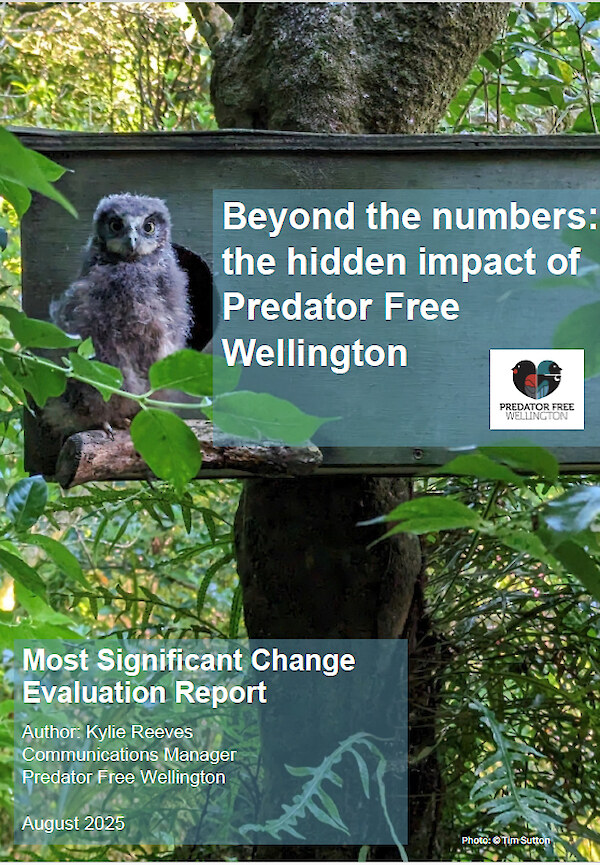 Beyond the numbers: the hidden impact of Predator Free Wellington
Beyond the numbers: the hidden impact of Predator Free Wellington
We eliminated rats and mustelids from the Miramar Peninsula. But what does that actually mean for the 20,000 people who live there?
To find out, we used a Most Significant Change methodology, collecting and analysing stories from residents, volunteers, businesses, teachers and field workers over 18 months. What we discovered goes far beyond wildlife recovery – it’s about restoring connection, pride and hope.
Read the full report here
What we found
The stories have revealed not just wildlife recovery but the emotional experience of witnessing biodiversity recovery. When a volunteer describes: “we’re seeing kārearea, which we never saw before. Even the lizards are making a comeback,” these narratives capture both the ecological facts and the personal meaning of change. Similarly, when residents reflect that “people feel connected to something bigger,” we see how the project has shifted from abstract appreciation to concrete action and connection – insights that numbers alone could never tell.
We identified four major themes of transformation:
These themes capture the multifaceted impact of our project, demonstrating its ecological, social and operational significance.
Why this matters
Breaking the urban-nature divide
We’ve demonstrated that cities need not be ecological wastelands but can become biodiversity hotspots when communities lead the way. The participation of everyday residents across demographic divides proves that conservation isn’t just for specialists or rural areas – it can become part of urban identity.
From top-down to community-owned
Our model differs from traditional pest suppression approaches. Rather than establishing an indefinite, ongoing control operation, we implement a defined project with clear timelines and costs. We work methodically through project areas, eliminating predators (rats, mustelids and possums) with intensive community involvement. When we complete work in a project area, we don’t simply withdraw; we leave behind a highly skilled community equipped to manage their own biosecurity. The transfer of knowledge and capability is part of the project’s design, ensuring that the project’s benefits continue long after our direct involvement ends.
Scaling beyond Wellington
The methodologies, tools and community engagement strategies provide a template for addressing diverse urban environmental challenges across cities worldwide. Wellington is becoming a centre of excellence not just for predator control, but for community-powered urban transformation.
Predator Free Wellington has achieved a transformation far more significant and far-reaching than our original metrics could ever capture.
The true legacy lies not just in the absence of predators, but in the presence of a stronger, more connected community with new capabilities, relationships, and collective purpose.
This is a transformation that numbers alone could never tell.
